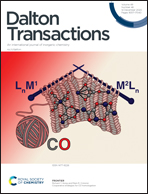Clay-catalyzed ozonation of endocrine-disrupting compounds in solvent-free media – to better understand soil catalytic capacity†
Abstract
An original approach never tackled so far allowed correlating the basicity and hydrophilic character of clay catalysts to surface interaction with 17α-Ethinylestradiol (EE2) during ozonation in water. The clay catalysts were found to behave specifically according to their silica/alumina ratio like soils in natural oxidative processes. Acid-activated bentonites (HMt) and ion-exchanged montmorillonite (NaMt and Fe(II)Mt) showed catalytic activity in the ozonation of 17α-ethinylestradiol (EE2) in aqueous media. In the absence of catalysts, the degradation of (EE2) reached 72% after one minute of ozonation and 99.5% after 60 minutes. In the presence of Fe(II)Mt, EE2 degradation (96%) was achieved after only one minute of ozonation. Under similar conditions, almost total degradation to 99.99% was registered in 15 minutes of ozonation but without total mineralization of the intermediates. Moderately acid-activated bentonites exhibited higher activity affording total mineralization within a short period of ozonation. The catalytic activity of clay catalysts was found to correlate with their surface basicity and hydrophilic character. The results obtained herein allow understanding soil behavior in natural oxidative degradation of organic molecules and envisaging effective soil-based catalysts with surface properties judiciously tailored according to the nature of organic pollutants in solvent free media.



 Please wait while we load your content...
Please wait while we load your content...